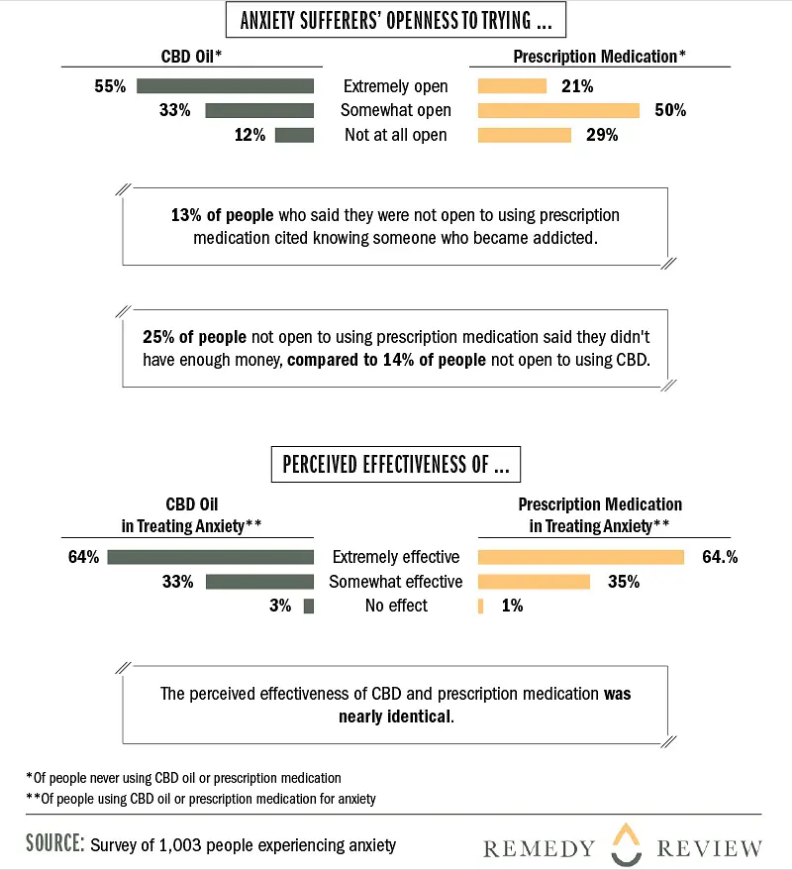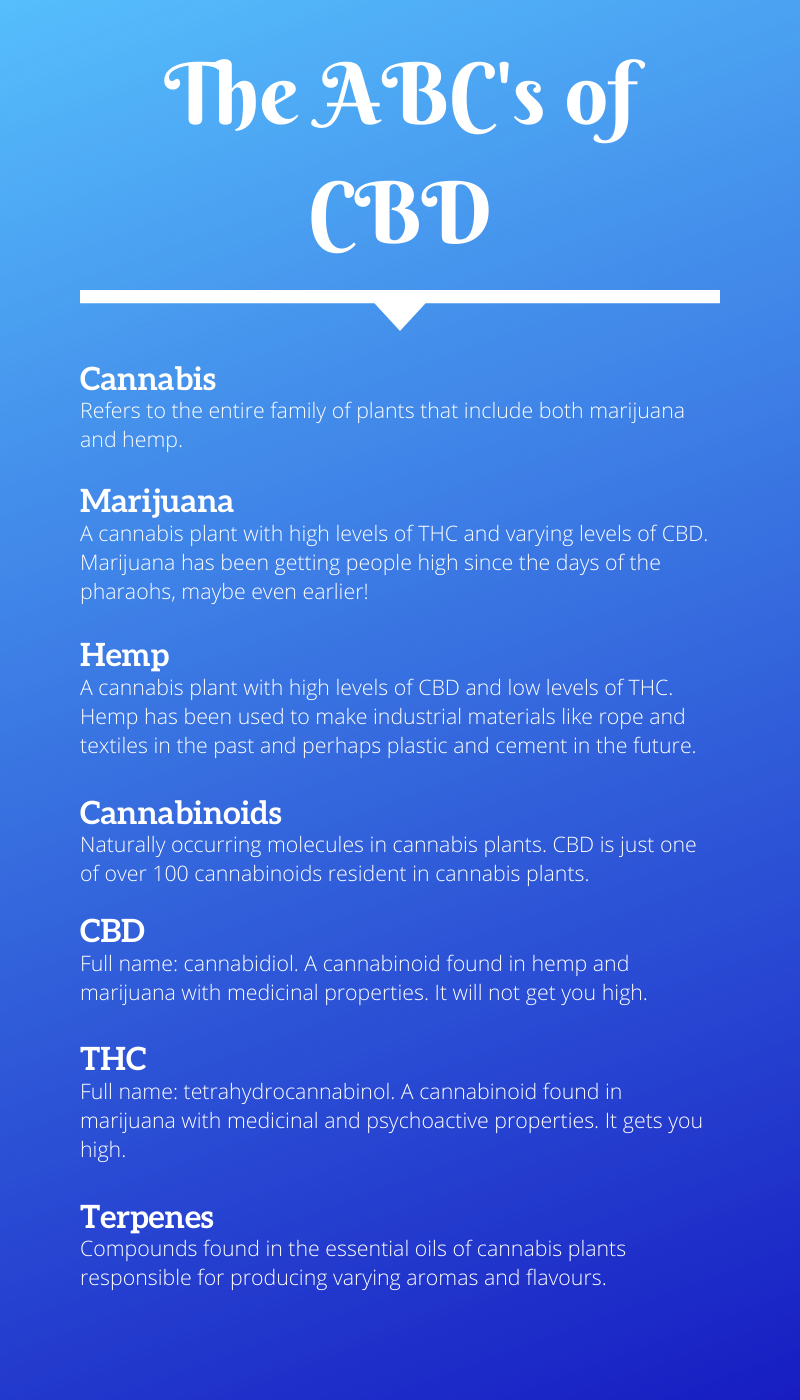Get those creaky joints ready to dance a jig because apparently there’s a new panacea in town! Its name is CBD—which stands for Cannabidiol. Reputed to be effective for treating almost everything under the sun, think chronic pain, anxiety, arthritis, endometriosis, insomnia, CBD is still a mystery for the uninitiated. Reliable information can be hard to find. In this article, we’ve navigated the sea of buzz on the web to condense nourishing droplets of fact from the vapor of questionable claims. We’ll go over the science and provide CBD newbies with some best practices for buying and using CBD oil in Canada.
CBD, the new kid on the medicinal block.
In Canada, CBD oil has exploded onto the market in the last couple years, appearing in everything from sports drinks, to pet treats, to beauty products, to medicinal “confections” formulated to fight pain, anxiety and other conditions. You can eat it, drink it, drop it under your tongue, slather it onto your skin, smoke it or vape it. But one thing you can’t do is get high on it. While CBD comes from the cannabis plant—the same plant that produces marijuana—it has no psychoactive properties. In fact, it can even inhibit the compound that gets you high—THC—from working. This is why some people like to use THC and CBD together. CBD emphasizes THC’s medicinal properties while inhibiting the psychoactive ones.
Though there is a tremendous amount of anecdotal evidence on the web from CBD users claiming it has helped them, the science as to exactly how it helps is still unclear. That’s because, despite cannabis being used as medicine for over 4000 years, prohibition in Canada and the US up until 2018 made studying the compound difficult, if not impossible.
Now that research has resumed, we’re getting a clearer picture of how this supposed miracle compound works. CBD is a phytocannabinoid which interacts powerfully with the human endocannabinoid system (ECS)—the system in our bodies responsible for regulating stress, sleep, metabolism, memory, inflammation, immunity and more.
According to leading endocannabinoid scientist Bradley E. Alger, (PhD, Harvard) “…Endocannabinoids are literally a bridge between body and mind,” which explains why CBD can have such widespread effects across such a broad number of systems in our bodies.
These effects can vary significantly, however, because each individual’s endocannabinoid system is different and because CBD is biphasic. This means that different doses of CBD can have completely different effects. For example, a small dose might make you more alert, whereas a larger dose might make you more sleepy. That’s right! Two apparently opposite effects are possible from the same substance!
That’s why much more research is necessary. We need to find out exactly what CBD does in various concentrations when used for different conditions.
First, some terminology:
The Endocannabinoid System (ECS): a quick overview
All vertebrates have endocannabinoid systems, be they fish, birds, cats or dogs. Cannabinoid receptors can be found all over your body. The highest concentration is in your central nervous system and brain (where they’re called CB1 receptors) and in your immune system and inflammatory cells (where they’re called CB2 receptors). Your body produces billions of endocannabinoids every day. These bind to endocannabinoid receptors to help you sleep, eat, remember where you put your keys, and start healing after injury. When endocannabinoids have completed their tasks, they are eliminated by enzymes.
In your brain, endocannabinoids play a role similar to that of neurotransmitters—transporting messages from one neuron to another. However they differ from other neurotransmitters. rather than sending messages with instructions for your body, they actually slow down the brain’s signalling. According to Mohini Ranganathan, MBBS, associate professor of psychiatry at Yale University and a CBD researcher: “When there’s too much neurotransmission going on — which you might experience as a racing mind, high anxiety, or even an increase in pain — endocannabinoids in the brain help pump the brakes.” This likely explains why so many people in Canada swear by CBD’s anti-anxiety and anti-inflammatory effects.
Another function of cannabinoids is to balance endocannabinoid levels when there is either a shortage or over-production of these compounds. A healthy ECS makes its own endocannabinoids which affect the experience of anxiety or pain. However, for some cannabinoid production is too low—or in some cases, overactive enzymes eliminate them before they do their jobs. “We think CBD binds to those CB2 receptors to inhibit the release of pain signalling,” says Mark Wallace, MD, a professor of anesthesiology at the University of California San Diego. CBD is also thought to permit the body’s naturally-produced cannabinoids to remain in our bodies longer, prolonging their effects.
What has CBD been shown to do?
There are already many people using CBD oil in Canada. Here are some of the most common ways CBD shows promise, and what the science says so far:
For relieving pain
CBD’s role in eliminating pain is multifaceted. For example, one way CBD works is by inhibiting the release of inflammatory agents like glutamate. This is what makes it a “neuroprotective.” CBD excels at dulling the burning, tingling and prickling sensations of neuropathic pain, especially when combined with other natural supplements such as magnesium glycinate.
Another way CBD works is by inhibiting the absorption of anandamide, a natural cannabinoid that regulates pain and is linked with feelings of well-being and happiness. CBD enhances anandamide signaling and helps reduce pain throughout the body.
One study on animals in the European Journal of Pain found that CBD applied topically could help reduce arthritis pain and inflammation. Another study on rodents found that CBD injections prevented inflammatory and nerve pain.
Additionally, a peer-reviewed research paper published in the British Journal of Pharmacology found that CBD alleviated severe neuropathic pain caused by chemotherapy in cancer patients. There’s also evidence that CBD relieves pain from multiple sclerosis. Not all results are so encouraging. In other studies, only 29% of those treated with CBD reported decreases in pain. However, results often vary due to researchers using ineffective doses or using poor quality CBD extracted from low-grade, government-grown hemp produced prior to CBD’s 2018 legalization.
Read more about CBD for pain.
For calming anxiety
Though more research needs to be done, there are a handful of studies that bolster CBD’s anti-anxiety credentials. One 2019 study of 72 adults who suffered from anxiety and poor sleep found that CBD helped alleviate both conditions within a month. Another study of 60 men and women found that while clonazepam consistently reduced anxiety better than both CBD and placebo, 300 mg of CBD significantly reduce anxiety compared to the placebo group.
In 2019, Remedy Review conducted a survey of over 1,000 people to see whether people felt CBD was effective in treating their anxiety, then compared that to results with pharmaceutical drugs. What they found was quite remarkable.
64% of those in the study reported CBD to be “extremely effective.” Although pharmaceutical drugs did a marginal 0.5% better, what this study tells us is that CBD is very close to being as effective as pharmaceuticals in treating anxiety. The added benefit?—CBD costs less and doesn’t cause addiction or serious side effects.
Already, there’s a growing body of evidence that CBD is good for:
- Generalized anxiety disorder
- Panic disorder
- Social anxiety disorder
- Obsessive–compulsive disorder (OCD)
- Post-traumatic stress disorder (PTSD)
Read more about CBD for anxiety.
For reducing menstrual pain and cramps
CBD works similarly to Ibuprofin, by decreasing your body’s production of inflammatory prostaglandins—the compounds that stimulate painful cramps. Not only do THC & CBD actually reduce the physical intensity of cramps, they reduce your ability to feel the pain they cause as well.
Although you can’t entirely eliminate prostaglandins, you can reduce the discomforts caused by prostaglandins. Here are all the properties CBD and other cannabinoids possess that reduce painful menstrual cramps:
- Anti-inflammatory: Cannabinoids target much more than just prostaglandins. For instance, THC activates endocannabinoid receptors CB2. When these are activated, they prevent macrophages from releasing inflammatory proteins called cytokines.
- Pain-relieving: Although prostaglandins and other inflammatory molecules can make pain-perceiving nerves more sensitive, cannabinoids fight back by desensitizing these nerves. Both CBD and THC target nerve receptors that help decrease the sensation of pain (TRPV1 and CB1, respectively). Additionally, not only does CBD desensitize TRPV1, but those soothing effects can spread to neighbouring pain receptors.
- Muscle-relaxing: Menstrual cramps are exacerbated by contractions of the smooth muscle lining the uterus — and cannabinoids are known to relax smooth muscles. THC and CBD both target different receptors embedded in the muscle tissue to relax contractions.
- Vascular-relaxing: Blood vessels are lined with smooth muscle. When cannabinoids trigger this smooth muscle to relax, blood flow increases. Increased blood flow could help provide relief to oxygen-starved tissues, further decreasing painful cramps.
Read more about CBD for women’s health.
For controlling seizures
Presently, there’s but one FDA-approved CBD medicine, called Epidiolex, and it’s for treating childhood epilepsy—particularly cases that don’t respond to anti-seizure medications. In a number of studies, pure CBD administered orally through an oil reduced the number of seizures. In some cases the seizures were stopped completely.
For treating schizophrenia
Preliminary research shows CBD may reduce some symptoms of schizophrenia without the side effects of most anti-psychotic drugs. “However, the data is mixed,” says Dr. Ranganathan, who has authored both studies that show CBD might have some benefit in treating schizophrenia, as well as studies that found CBD had no effect at all.
For improving sleep
Reportedly, nearly 80 percent people have trouble sleeping once a week. Some of the main worries about prescription and over-the-counter drugs is that they are ineffective and addictive.
Joseph Maroon, M.D., clinical professor and neurosurgeon at the University of Pittsburgh Medical Center, and a seasoned researcher on how cannabis affects the brain, says CBD appears to ease anxiety and pain, both of which can make it harder to fall or stay asleep.
For people whose pain interferes with sleep, CBD offers a promising alternative to pharmaceuticals. CBD has been show to reduce pain-induced sleeplessness by working on the pain symptoms themselves, whereas pharmaceutical drugs targeting sedation don’t address pain.
A 2017 review of sleep and cannabis in the journal Current Psychiatry Reports showed CBD might influence sleep directly by stimulating receptors in the brain that govern daily sleep/wake cycles.
We’re also learning that CBD regulates cortisol—a stress hormone, which has a significant impact on non-REM sleep cycles. A large case series review found that CBD was beneficial for anxiety-related disorders and increased people’s sleep quality.
Read more about CBD for sleep.
 For improving skin health
For improving skin health
There is hard proof CBD reduces inflammation and pain when applied topically. At the very least, we know CBD is a great source of antioxidants and beneficial amino acids.
The need for more research prevents some doctors from completely endorsing CBD, despite results so far. Cosmetic dermatologist Shereene Idriss, M.D., of Union Square Laser Dermatology said, “There’s a 2014 study in the Journal of Clinical Investigation that showed promising results for using CBD to treat acne.” Dr. Idriss has high hopes for CBD, but she can’t recommend it until she sees additional research.
Still, there are some doctors who are happy giving advice. NYC cosmetic dermatologist Sejal Shah, M.D. said, “Generally, CBD is well tolerated by all skin types, but be sure to look for it in products that best suit your skin type.” Although CBD won’t cause irritation, other ingredient in skin care product might. “Just as you would with any new product, start ones containing CBD with caution and stop using it if [you] develop a negative reaction,” she said.
“CBD has been shown to be soothing to the skin, and has been used in the treatment of acne and rosacea as well as eczema and dryness,” said Shirley Chi, MD, a Los Angeles-based dermatologist. “The anti-inflammatory properties of CBD can help decrease itching and puffiness of skin, and even treat soreness of the skin,” she added.
Read more about CBD for skin and beauty.

Is CBD oil legal in Canada?
Yes, ever since the Cannabis act of 2018, consumers have been free to buy CBD products of their choice.
Is CBD safe? What about side effects? Overdoses?
There are no instances of people overdosing on CBD oil in Canada or anywhere else. CBD is safe and humans tolerate large doses well. It is possible to feel a few side effects if you take far too much though, including diarrhea, appetite changes, and fatigue. However, people have been prescribed 1500 mg of CBD per day—the entire contents of a typical bottle—without any side effects. Typically, a bottle should last you 2-4 weeks.
One thing that is important to note is that CBD can interact with other medications, so if you are on any prescription medications or drugs of any kind, you should talk to your doctor about taking CBD to make sure you don’t experience any unwanted drug interactions.
The FDA strongly advises against using CBD if you are pregnant or breastfeeding.
 What are the different ways to take CBD Oil in Canada?
What are the different ways to take CBD Oil in Canada?
Edibles. CBD oils and tinctures mixed into anything you can eat, including gummies, chocolates, drinks, coffee, popcorn, salad dressing and more.
How they work. When CBD goes through the digestive system, only a small percentage gets absorbed, “If you ingest 100 mg of CBD only about 5 mg may end up in your bloodstream,” says Dr. Ranganathan. If you want to feel a stronger effect, you may have to increase the dosage.
Many people enjoy edibles because they are discreet, one just looks like they’re eating run-of-the-mill gummy bears or treats. Edibles release CBD more gradually through your system than other methods, so this is a better delivery method if you want CBD active in your system over a longer period.
Sublingual. Oils and tinctures designed to be held under your tongue before swallowing.
How it works: To get CBD to your brain, the best way is to use a dropper and put a few drops under your tongue. There’s a very high concentration of blood vessels there and it’s close to the brain. Don’t swallow right away, leave it under your tongue 30-90 seconds. The liver filters CBD quite efficiently, so this method is superior to ingesting it.
Topicals. CBD-infused creams and balms you rub on sore areas like knees, back or arthritic hands.
How they work: For localized pain, as in the case of muscle spasms and arthritis pain, it might be advisable to try a CBD-infused balm, pain stick, transdermal patch, or even to apply CBD oil directly to your skin. While CBD has limited bioavailability when ingested, CBD has longer lasting therapeutic effects when absorbed through your skin.
CBD capsules. Capsules filled with oil you swallow like a traditional supplement. Packaged like bottles of vitamins or supplements, they contain gel caps filled with a golden oil.
How they work: Almost identically to other edibles. It’s quicker to consume these than by chewing a gummy, however the cbd oil must still pass through the digestive tract, ensuring that the liver can remove some of the CBD before it enters the bloodstream.
CBD vape oil. These can be pre-filled oil cartridges that attach to vape batteries or vape juice for use in e-cigarettes.
How they work: These by-pass the liver, ensuring high bio-availability and are a good method of taking CBD if you want to experience the effects more quickly. However, there are numerous concerns with the health impacts of vaping.

Smoking/vaping CBD flower: Using joint made from CBD-dominant cannabis flower or a vaporizer.
How it works: Another way to inhale CBD through the lungs. Though smoking a CBD-dominant cannabis strain like Charlotte’s Web still comes with the tar and smoke of a regular joint (and perhaps a little THC as well), it is possible to vape CBD-dominant flower using specialized vaporizers built specifically for that purpose.
Buying CBD? A few rules of thumb:
✘ DON’T trust labels. In a 2017 JAMA study of 84 CBD products purchased online, 43% had more CBD than indicated, 26% had less, and some contained THC. When purchasing CBD, ask to see the lab results proving the contents are as they state.
✘ DON’T hunt for bargains. “Good CBD is expensive,” says Dr. Wallace. “CBD manufacturers have to do a lot of extraction to get CBD oil from hemp plants, and while they’re getting more efficient at that process, it’s time-consuming and expensive.” That’s why quality CBD can cost more than $100 for a 1-ounce bottle of oil.
✘ DON’T believe the hype about the ideal dose. No matter which way you decide to take CBD, the rule of thumb is “start low, go slow.” There’s no prescribed dosage for CBD, and since it acts differently on different people according to their condition, weight, body chemistry and other factors, finding the right dose usually involves a little experimentation. Read more about proper CBD use and dosage.
A few more tips for buying CBD oil in Canada:
- buy from health-minded sources – no gas stations,
- read labels carefully; hemp oil isn’t CBD oil for example,
- avoid products sourced from hemp seed or stalks,
- look for products that have information for reporting negative effects and
- look for lab-tested products.
Other resources:
Canada’s Dani Gordon specializes in Cannabis medicine. Her YouTube channel is highly informative for those seeking education about the benefits of CBD oil in Canada.




